The Xbox is a go-to console for gamers who like to indulge in cutting-edge technology and captivating game experiences. While it’s impressive in its original form, many enthusiasts aim to enhance their gaming experience by modifying the console.
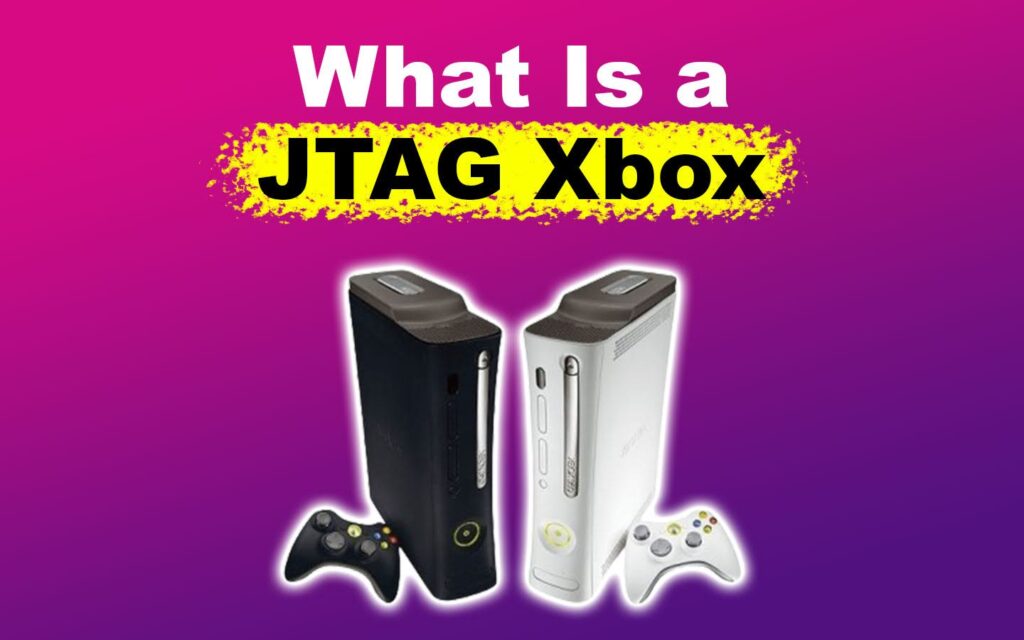
One popular way is to JTAG the Xbox, which gives you greater control over your device’s hardware and software. But what does JTAG mean for Xbox 360? And Is it illegal? If you are looking for answers to these questions, this article is all you need. Let’s find out what a JTAG Xbox is.
What Is a JTAG Xbox?
A JTAG Xbox is a console that has been modified to allow users to run homebrew games, unsigned codes, and backup copies of games on the device. A JTAG is a hack that allows users to bypass the console’s security measures and run custom firmware on the system.
JTAG stands for Joint Test Action Group, a standard for testing printed circuit boards. It lets you access custom applications, emulators, and other software unavailable on the official Xbox Marketplace.
It also enhances their gaming experience and lets them play retro games, run Linux on their console, and other features.
Is JTAGGING Your Xbox Legal?
Yes, JTAGGING your Xbox is legal if you don’t use it to pirate games. However, it violates the console’s community standards and security features, which can lead to a ban. JTAGGING can cause you to lose access to Xbox Live, games, multiplayer features, and digital content.
Jtagging may also void your console’s warranty, as Microsoft considers any modifications to its device unauthorized. Unofficial software can also expose your device to security risks such as malware or privacy breaches.
If you don’t do the modding process correctly, it can damage your console, rendering it inoperable.

How to JTAG Your Xbox
To JTAG your Xbox, you’ll need a solder, soldering iron, NAND Programmer, JTAG wires, and a compatible Xbox.
A NAND programmer is a hardware tool that reads from and writes to electronic devices’ NAND flash memory. It can store critical system information, firmware, and other data, install custom software, and run unauthorized code. For this tutorial, we used the Xecuter NAND-X programmer and an Xbox 360.
It’s worth noting that not all Xbox 360 models can be JTAGGED. Check the manufacturing date and the kernel version to determine whether your Xbox version can be JTAGGED.
If your console’s manufacturing date is before June 18th, 2009, you can potentially JTAG it. Xbox 360 consoles with a kennel version of 7331 or lower can also be JTAGGED.
The kernel version of 8498 or higher cannot be JTAGGED. To check the console’s kernel version, go to “System Settings > Console settings > System Info“.
Important! Back up your existing data and game saves, as the process will erase everything on your console.
Follow these steps to JTAG your Xbox:
Step 1: Remove the Outer Casing of Your Console
Step 2: Identify Your Motherboard Type
Xbox 360 motherboards have three types – Jasper, Zephyr, and Falcon. Jasper motherboards don’t have HDMI ports, making them easy to identify.
Refer to this image to differentiate between Zephyr and Falcon motherboards:
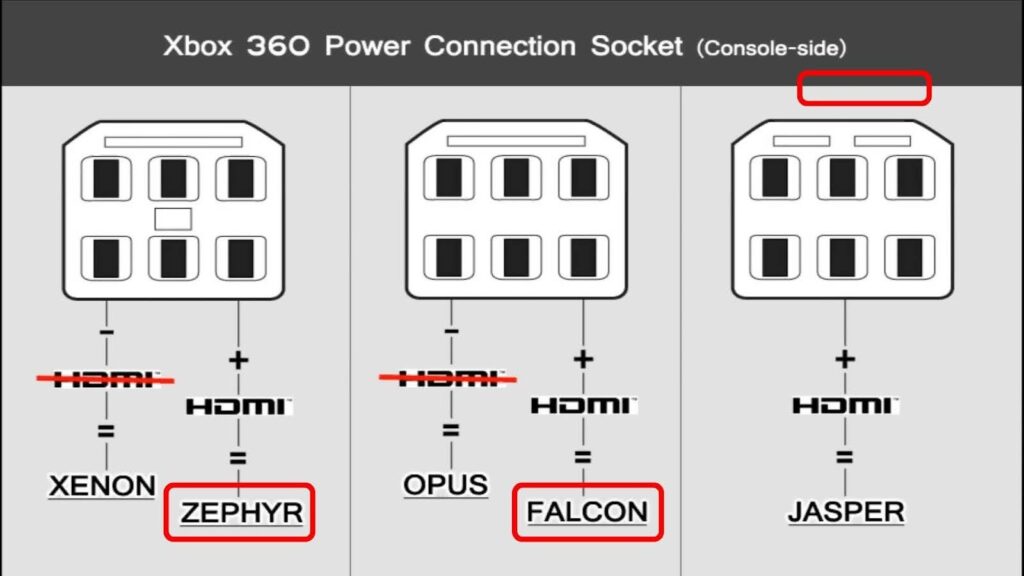
Step 3: Find the JTAG Points on the Xbox Motherboard
To complete the JTAG process, you must access the small solder points.
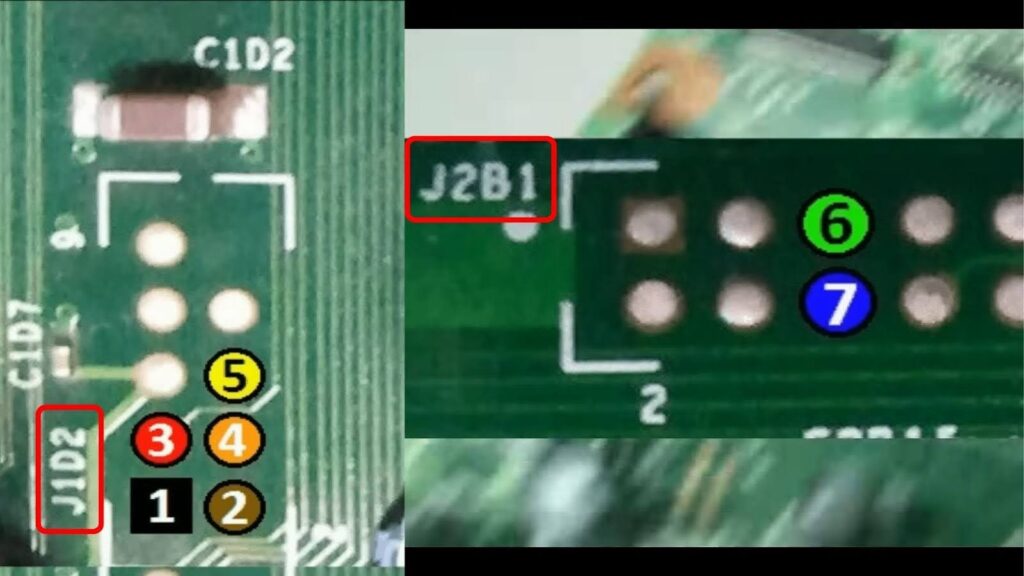
Step 4: Connect the Wires to JTAG Points
Secure the wires to the JTAG points on the motherboard using a soldering iron. Any loose wire during the JTAG process can cause problems.
Important! The colors on the soldering points in the image below correspond to those of the JTAG wires you need to solder onto them.

Step 5: Connect Wires to the NAND Programmer
Step 6: Read the NAND Memory
Connect your Xbox to a computer while keeping it turned off. We used J-Runner With Extras to read the NAND memory.
Important! If your NAND reader requires multiple numbers of reads, ensure that all the NAND reads are the same. Otherwise, do not proceed with the JTAGGING process, as this means some of the wires are soldered into the incorrect JTAG points.

Step 7: Adjust the NAND File
If you’re using J-Runner With Extras, click on the “Create Xell Reloaded” button. Then, choose the type of motherboard your console as on the pop-up menu.
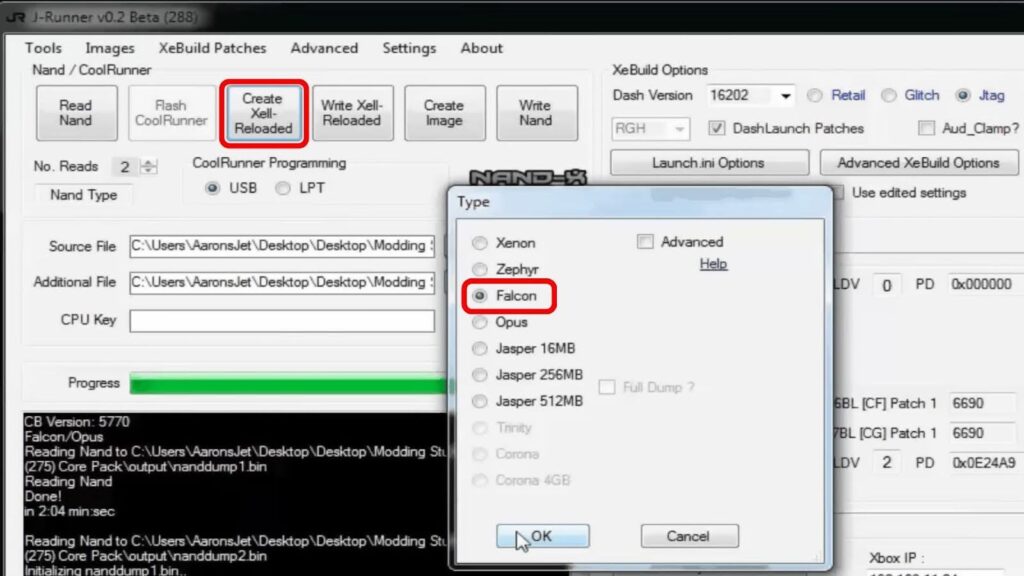
Step 8: Write the Modified NAND File Back to the Xbox 360’s NAND Memory
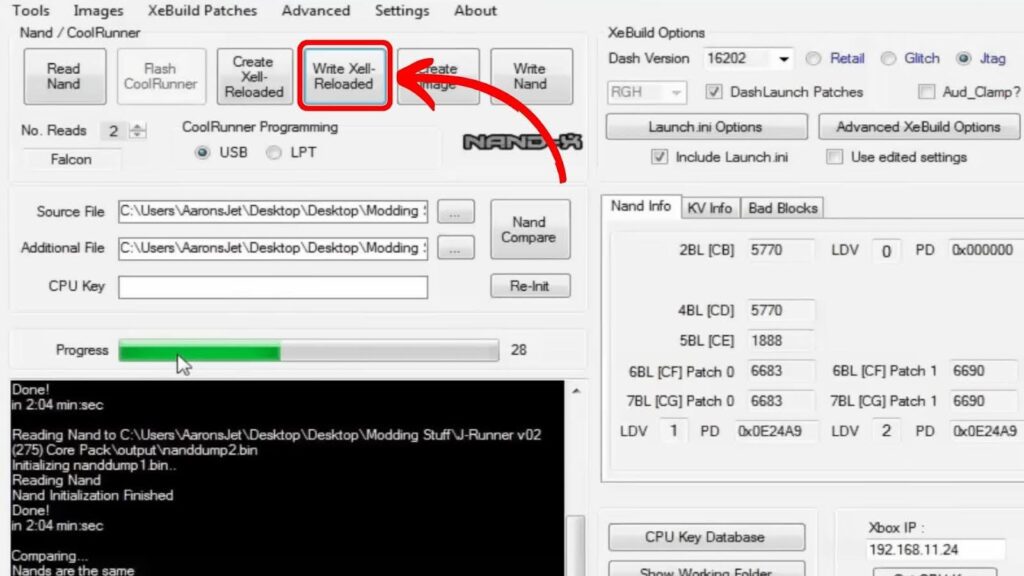
Step 9: Put Together Your Xbox 360 and Ensure the Connections Are Secure.
Apart from JTAGGING, using an aimbot for Xbox also helps you improve your gameplay by automatically aiming at a target.
Can You Play Online Games on a JTAGGED Xbox 360?
Yes, you can play online games on a JTAGGED Xbox 360 by installing stealth services like Proto or xbOnline. Stealth services are private servers that prevent Xbox Live from detecting a modified console.
However, it is important to note that this can be risky. Xbox Live has security measures to detect and ban modified consoles from accessing their services. If caught, you may face a permanent ban from Xbox Live.
Did you know you can play games early on your Xbox?
Benefits of JTAG for Xbox
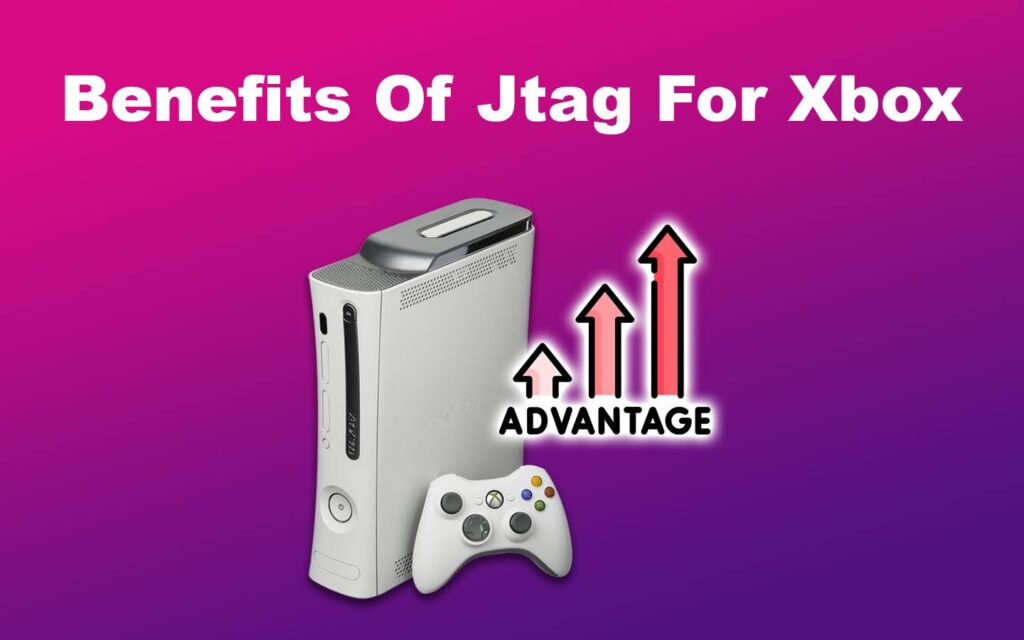
These are the benefits of JTAG for Xbox:
- Additional Features.
JTAG can offer additional features and capabilities to your Xbox console, such as adding custom hardware or overclocking the processor. These modifications can enhance its performance and functionality. - Removal of Region Restrictions.
JTAG can remove region restrictions on Xbox, allowing you to play games from any region. This is especially useful if you want to play imported games or games never released in your area. - Homebrew Applications.
With JTAG for Xbox, you can run Homebrew applications such as media players, emulators, or other software that can improve your Xbox experience. - Boosts Access to the Console Files System.
You can access the file system through JTAG, modify files, create custom themes, and even make your own games.
The Convenience of a JTAGGED Xbox
JTAGGING your Xbox is convenient. It unlocks various possibilities, such as running custom software, backup games, and homebrew applications. It also allows you to play online games and access additional features.
However, if detected by Microsoft, you risk being permanently banned from Xbox Live. This may also void your warranty or result in the loss of any purchased digital content. Now that you know the risks and benefits, deciding if it’s worth it is up to you.
![How to Mod Your Xbox 360 [✓ Easy Steps] mod-xbox-360](https://alvarotrigo.com/blog/wp-content/uploads/2024/09/mod-xbox-360-300x188.jpg)
![Every Xbox Generation in Order [Find Out What Xbox You Have] every-xbox-generation-order](https://alvarotrigo.com/blog/wp-content/uploads/2024/02/every-xbox-generation-order-300x200.jpg)
![Using an Xbox One Controller on Xbox 360 [Will It Work?] xbox-one-controller-work-xbox-360](https://alvarotrigo.com/blog/wp-content/uploads/2024/05/xbox-one-controller-work-xbox-360-300x200.jpg)
![Best Xbox Emulators for Android? [ Xbox 360, One, Original... ] xbox emulator android share](https://alvarotrigo.com/blog/wp-content/uploads/2023/08/xbox-emulator-android-share-300x150.png)
![Xbox One Pros and Cons - [Full Review] xbox one pros cons share](https://alvarotrigo.com/blog/wp-content/uploads/2023/08/xbox-one-pros-cons-share-300x150.png)
![What Xbox Do You Have? [ 3 Fastest Ways to Identify It] what xbox i have share](https://alvarotrigo.com/blog/wp-content/uploads/2023/08/what-xbox-i-have-share-300x150.png)